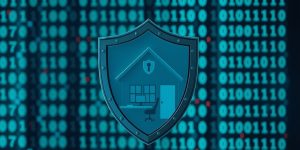In the rapidly evolving digital marketplace, e-commerce security is paramount for protecting sensitive customer data and maintaining trust. This guide provides actionable insights into enhancing your e-commerce security by selecting and displaying the right security seals. By implementing these measures, you can safeguard your online store against cyber threats and build a secure shopping environment for your customers.
Key Takeaways
- Establish a secure payment system and display prominent security seals to boost customer confidence and trust in your e-commerce store.
- Be transparent with your policies and showcase third-party certifications to demonstrate your commitment to security and integrity.
- Choose SSL certificates and strong password policies, including two-factor authentication, to protect customer data and transactions.
- Maintain security vigilance through regular malware scans, limiting user access, and selecting a secure hosting provider.
- Develop a robust cybersecurity architecture by assessing system stability, addressing security bottlenecks, and continuously improving security measures.
Establishing a Robust Payment Security Framework

Implementing Secure Payment Systems
In the realm of e-commerce, the security of payment systems is paramount. Implementing secure payment systems is not just about adopting the latest technology; it’s about creating a secure environment that fosters customer confidence and meets regulatory standards. To achieve this, e-commerce sites must integrate multiple layers of security, including encryption, secure payment gateways, and compliance with Payment Card Industry Data Security Standard (PCI DSS).
The cornerstone of payment security is a multi-faceted approach that encompasses both technological solutions and procedural rigor.
E-commerce businesses should prioritize the following action items:
- Ensure that all payment software is regularly updated to patch vulnerabilities.
- Implement two-factor authentication (2FA) to add an extra layer of security for user accounts.
- Regularly scan for malware to detect and mitigate threats promptly.
- Employ robust data backup strategies to prevent data loss in case of security breaches.
- Utilize password managers to help users create and manage strong, unique passwords.
By adhering to these practices, small e-commerce sites can effectively shield themselves from cyber threats and uphold the trust of their customers.
Displaying Payment Security Seals
Exhibiting payment security seals on your e-commerce platform is a critical step in fostering customer trust and demonstrating a commitment to secure transactions. Security seals serve as a visual endorsement of your site’s integrity, reassuring customers that their payment information is handled with the utmost care. These badges, such as Verified by Visa or Mastercard SecureCode, are not just decorative elements; they are symbols of a secure online environment that align with secure online practices.
When customers see recognized security seals, they are more likely to complete a purchase, knowing that their sensitive data is protected against unauthorized access.
It is essential to display these seals prominently, ensuring they are visible during the payment process. This visibility can significantly influence the customer’s perception of security and their willingness to engage in transactions. The placement of these seals should be strategic, such as in the website footer or near payment options, where they can be easily noticed without obstructing the user experience.
- Ensure a secure payment system
- Display security seals clearly
- Choose secure web hosts
- Develop an incident response plan
By adhering to these practices, you can enhance the credibility of your e-commerce site and provide a safer shopping experience for your customers.
Adopting Strong Password Policies and Two-Factor Authentication
In the realm of e-commerce, the security of customer accounts and transactional data is paramount. Enforcing strong password policies is a foundational step in safeguarding user information. Passwords should be complex, combining letters, numbers, and special characters, and they should be changed regularly to mitigate the risk of unauthorized access.
Two-factor authentication (2FA) adds an essential layer of security, requiring users to provide two distinct forms of identification before gaining access to their accounts. This method significantly reduces the likelihood of account breaches, as obtaining both factors of authentication is considerably more challenging for potential intruders.
By integrating strong password requirements and 2FA, e-commerce platforms can significantly enhance their security posture, ensuring that customer data remains protected against the evolving landscape of cyber threats.
Additionally, it is crucial to stay abreast of the latest security protocols and implement regular updates to maintain a robust defense against potential vulnerabilities. The following list outlines key practices that should be part of a comprehensive security strategy:
- Implement HTTPS to secure data in transit
- Regularly update software to patch security flaws
- Utilize role-based access control (RBAC) to limit data exposure
- Encrypt sensitive data to prevent unauthorized deciphering
Designing for Transparency and Trust

Clarifying Policies with Simple Language
In the realm of e-commerce, the clarity of policies is paramount. Customers must be able to easily comprehend return, refund, and shipping policies. This transparency not only fosters trust but also minimizes confusion and potential disputes. For instance, a clear policy should detail the return window, eligible items, and the process for initiating a return, including who is responsible for return shipping costs.
To further enhance customer experience, e-commerce platforms should feature an easy-to-use returns portal. This portal could offer options such as generating pre-paid return labels, ensuring a seamless return process. Additionally, policies should be prominently displayed across the website, accessible from any page, and written in straightforward language with minimal jargon.
Ensuring that policies are easily accessible and understandable can significantly impact customer satisfaction and trust in an e-commerce platform.
Moreover, providing multiple contact points, such as a visible ‘Contact Us’ page, and addressing common concerns through a frequently asked questions (FAQs) page are essential steps. These elements contribute to a transparent environment where customers feel informed and supported throughout their shopping journey.
Showcasing Third-Party Certifications
Third-party certifications serve as a testament to an e-commerce platform’s commitment to security and ethical practices. Displaying these certifications can significantly enhance customer trust, leading to increased transaction completion rates. Certifications from reputable organizations, such as the Better Business Bureau (BBB), not only affirm your business’s integrity but also its dedication to quality service.
The strategic placement of trust badges on your site, particularly on checkout pages, can reduce cart abandonment and reassure customers of the transaction’s security. This is crucial for platforms like Shopify, where trust badges can be seamlessly integrated.
Incorporating trust seals and accreditations, such as SSL trust seals, signifies to customers that their sensitive data is protected. It is essential to not only include these badges but also to ensure they are from recognized and respected sources. Here is a list of common third-party certifications and what they represent:
- SSL Certificates: Encryption of data in transit
- Payment Security Seals: Protection against unauthorized transactions
- Industry-Specific Seals: Compliance with professional standards
These tokens of social proof are not just decorative elements; they are influential in convincing potential customers of your e-commerce site’s credibility and adherence to industry standards.
Ensuring Easy Access to Security Information
In the realm of e-commerce, transparency is not just a buzzword; it’s a foundational element that fosters trust between the merchant and the customer. Easy access to security information is crucial for customers to feel confident in their transactions. This includes clear visibility of SSL certificates and site seals, which serve as indicators of a secure connection and a trustworthy site.
The presence of security seals and detailed security policies on an e-commerce website can significantly enhance customer trust. It is essential that these elements are not buried in the fine print but are prominently displayed and easy to find.
For instance, when a customer is about to enter sensitive information, a visible security seal can reassure them of the site’s integrity. The website should emphasize the importance of SSL certificates and site seals for trust and security, providing tips for choosing a reliable provider and understanding certificate features. Extended Validation (EV) certificates, in particular, offer high trust assurance and warranty coverage, which can be a deciding factor for cautious online shoppers.
Below is a list of action items to ensure security information is readily accessible:
- Display security seals prominently on all relevant pages.
- Provide a dedicated section for security information, including the types of SSL certificates used.
- Offer clear explanations of the security measures in place and their benefits to the customer.
- Include links to detailed descriptions of the security certifications and standards the e-commerce site adheres to.
Selecting and Implementing Effective Security Seals

Understanding Different Types of E-Commerce Security Seals
E-commerce security seals serve as visual indicators that an online store is committed to protecting its customers’ data and transactions. Understanding the variety of security seals available is crucial for selecting the ones that best align with your business needs and customer expectations.
Security seals can be broadly categorized into several types:
- SSL Certificates: These are essential for encrypting data between a website and its visitors, indicated by a padlock icon in the address bar.
- Payment Security Seals: Seals like Verified by Visa or Mastercard SecureCode reassure customers that the site has measures to prevent unauthorized transactions.
- Third-Party Certifications: Seals from organizations such as the Better Business Bureau (BBB) reflect a business’s adherence to industry standards and ethical practices.
Selecting the right combination of security seals involves assessing which types resonate most with your target audience and will support the integrity and reliability of your e-commerce platform.
Each type of seal addresses different aspects of security and trust. For instance, while SSL certificates focus on data protection, payment security seals emphasize transaction security, and third-party certifications validate business credibility. It’s important to convey to customers that you take all facets of security seriously by implementing a comprehensive suite of seals.
Criteria for Choosing the Right Security Seals
Selecting the appropriate security seals for your e-commerce platform is a critical decision that can significantly impact customer trust and conversion rates. The choice should be informed by the specific needs of your business and the expectations of your customers.
When evaluating security seals, consider the following criteria:
- Relevance: The seal should be pertinent to your industry and resonate with your customer base.
- Recognition: Opt for seals that are widely recognized and trusted by consumers.
- Compliance: Ensure the seal represents compliance with current security standards and regulations.
- Assurance: The seal should provide a clear assurance of security to your customers.
It is essential to balance visibility with authenticity; a security seal must not only be displayed prominently but also reflect a genuine commitment to safeguarding customer data.
Finally, while selecting a seal, assess the credibility and reputation of the issuing organization. A seal from a respected authority can enhance the perceived security of your e-commerce site, thereby fostering a safer shopping environment.
The Role of SSL Certificates in E-Commerce Security
Secure Socket Layer (SSL) certificates form the backbone of security in e-commerce by encrypting the data exchange between a customer’s browser and the e-commerce platform. The presence of an SSL certificate is visually confirmed through a padlock icon in the address bar, assuring customers of the safety of their personal and payment information.
SSL certificates are crucial for small businesses to protect customer data and build trust. Strong passwords, SSL installation, and user access management are key for website security.
The installation of an SSL certificate is a fundamental step in establishing a secure online presence. It not only protects data but also contributes to the site’s search engine ranking, as search engines favor secure websites. Below is a list of actions e-commerce site owners should take regarding SSL certificates:
- Verify the SSL certificate’s validity and ensure it is up to date.
- Choose a certificate with the appropriate level of validation: Domain Validated (DV), Organization Validated (OV), or Extended Validation (EV).
- Regularly monitor for any security warnings or errors related to SSL that might affect customer trust or website functionality.
Maintaining Vigilance with Regular Security Practices

Conducting Regular Malware Scans
Regular malware scans are a critical component of e-commerce security, serving as an early warning system to detect and mitigate threats. Conducting scans routinely ensures that any malicious code is identified before it can cause significant damage. It is essential to establish a schedule for these scans, balancing thoroughness with the need to maintain site performance.
Malware scans should be thorough enough to cover all potential entry points, including files, databases, and external integrations, without causing undue disruption to site operations.
The frequency of scans can vary based on several factors, including the size of the e-commerce platform, the volume of transactions, and the sensitivity of the data handled. Below is a suggested framework for scan frequency:
- Daily: Quick scans for high-traffic sites.
- Weekly: Comprehensive scans during low-traffic periods.
- Monthly: In-depth scans with a focus on new or updated content.
By adhering to a structured scanning protocol, e-commerce businesses can significantly reduce the risk of malware infections, safeguarding both their operations and their customers’ data.
Limiting User Access and Permissions
In the realm of e-commerce, limiting user access and permissions is a critical step in safeguarding your platform. By adhering to the principle of least privilege, you ensure that individuals have access only to the information and tools necessary for their roles. This minimizes the risk of accidental or malicious data breaches.
A robust access control system is not just about restricting users; it’s about defining clear roles and responsibilities that align with your security policies.
To effectively manage user permissions, consider the following steps:
- Establish role-based access controls (RBAC).
- Regularly review and update access rights.
- Implement strict controls on admin accounts.
- Use audit logs to monitor access and detect anomalies.
By implementing these practices, you create a more secure environment that supports the overall integrity of your e-commerce operations. Additionally, integrating these measures with other security practices, such as regular malware scans and choosing a secure hosting provider, forms a comprehensive defense against potential threats.
Choosing a Secure Hosting Environment
Selecting the right hosting environment is pivotal for e-commerce security. Your web hosting is the foundation on which your entire online store is built. It directly impacts your website’s speed, uptime, and security, all of which are crucial for customer satisfaction and sales. A secure hosting provider should prioritize security measures and offer proactive monitoring to ensure the integrity of your e-commerce platform.
Website security is crucial for protecting sensitive data and transactions. Implement multi-layered security measures, SSL certificates, encryption, and secure authentication to minimize risks and prevent breaches.
When evaluating hosting options, consider the following:
- Shared Hosting: Economical but may lead to inconsistent performance due to shared resources.
- Virtual Private Server (VPS) Hosting: Provides more control and stability with dedicated server resources.
Remember, a reliable host not only ensures that your store is accessible around the clock but also that it can handle traffic surges, especially during peak sales periods. Regular testing of your checkout flow on different devices is also recommended to identify and rectify any potential friction points.
Developing a Sturdy Cybersecurity Architecture

Assessing System Stability
In the realm of e-commerce, system stability is the bedrock upon which customer trust is built. Assessing system stability involves a thorough examination of the IT infrastructure to ensure that all components function optimally and cohesively. This process is not a one-time event but a continuous cycle that ensures the platform’s lawful operation and reliability.
E-commerce systems can be assessed for vulnerabilities both internally, by examining the IT infrastructure for security flaws, and externally, by identifying threats from the global network. It is crucial to understand that the most successful cyber attacks often exploit both internal and external weaknesses, necessitating a comprehensive approach to vulnerability assessment.
A robust e-commerce platform requires regular evaluation to maintain its integrity and protect against potential cyber threats. This involves not only identifying and addressing current vulnerabilities but also preparing for future challenges in cybersecurity.
The following list outlines key steps in assessing system stability:
- Conducting vulnerability assessments to identify weaknesses
- Evaluating network security to detect unauthorized access points
- Ensuring compliance with standards such as ISO 27001, NIST, and OWASP
- Utilizing both automated and manual techniques to prioritize and address issues
- Engaging a pentesting team to simulate cyber attacks and evaluate defenses
Identifying and Resolving Security Bottlenecks
In the pursuit of a fortified e-commerce platform, identifying and resolving security bottlenecks is a critical step. This process involves a meticulous examination of the system to pinpoint weaknesses that could be exploited by cyber threats. A comprehensive approach includes both automated and manual techniques to ensure a thorough analysis.
Once vulnerabilities are identified, they must be prioritized based on their potential impact and the likelihood of exploitation. This prioritization helps in allocating resources effectively to address the most critical issues first.
The resolution phase is multifaceted, encompassing the implementation of patches, updates, and security enhancements. It is essential to choose the right security solutions based on threat detection, scalability, integration, and vendor reputation. Regular security audits and updates are imperative to adapt to the evolving landscape of cyber threats and to maintain the integrity of the e-commerce platform.
Continuous Improvement of Cybersecurity Measures
In the dynamic landscape of e-commerce, continuous improvement of cybersecurity measures is not just a recommendation; it’s a necessity. As attack rates climb and new vulnerabilities emerge, businesses must adapt their defenses to stay ahead of threats. This process involves a cyclical approach: assessing system stability, resolving security bottlenecks, and then circling back to reassessment.
The commitment to ongoing cybersecurity enhancement is crucial for maintaining customer trust and ensuring compliance with data protection regulations.
To effectively manage this process, businesses should consider the following steps:
- Regularly reevaluate cybersecurity measures to ensure they meet current threats.
- Stay informed about the latest hacking techniques and adapt strategies accordingly.
- Ensure adherence to industry standards such as ISO 27001, NIST, and OWASP.
- Utilize both automated and manual testing to identify and prioritize system vulnerabilities.
By embedding these practices into the organizational culture, e-commerce entities can foster an environment of vigilance and proactive security management.
In today’s digital age, a robust cybersecurity architecture is not just a luxury—it’s a necessity. With cyber threats evolving at an unprecedented pace, safeguarding your business’s digital assets has never been more critical. At TheSecurity.com, we specialize in providing premium cybersecurity solutions tailored to your unique needs. Whether you’re a small business or a large enterprise, our Diamond and Gold packages offer comprehensive protection to keep your data safe and your operations running smoothly. Don’t leave your cybersecurity to chance. Visit our website now to explore our services and secure your business’s future.
Conclusion
In the digital marketplace, security is not just a feature but a cornerstone of customer trust and business sustainability. As we have explored, enhancing e-commerce security through the strategic use of security seals and certifications is a multifaceted endeavor. From implementing secure payment systems and SSL certificates to showcasing trust seals and third-party accreditations, each step contributes to a robust cybersecurity architecture. It is imperative for e-commerce businesses to continuously evaluate and improve their security measures, ensuring transparency and integrity in their operations. By following the outlined action items and embracing the recommended security practices, online merchants can safeguard their platforms against cyber threats, foster consumer confidence, and maintain a competitive edge in the ever-evolving landscape of e-commerce.







